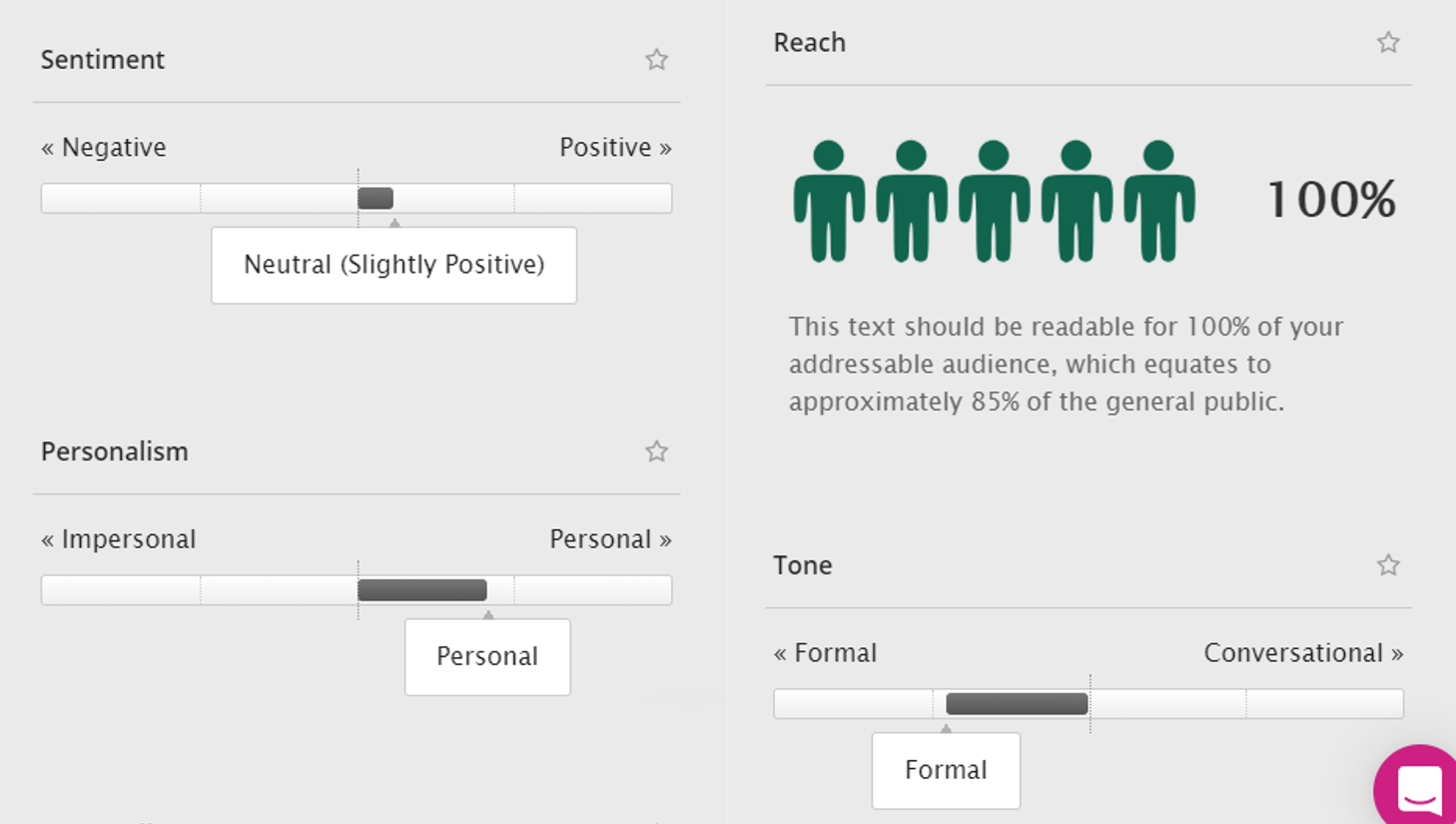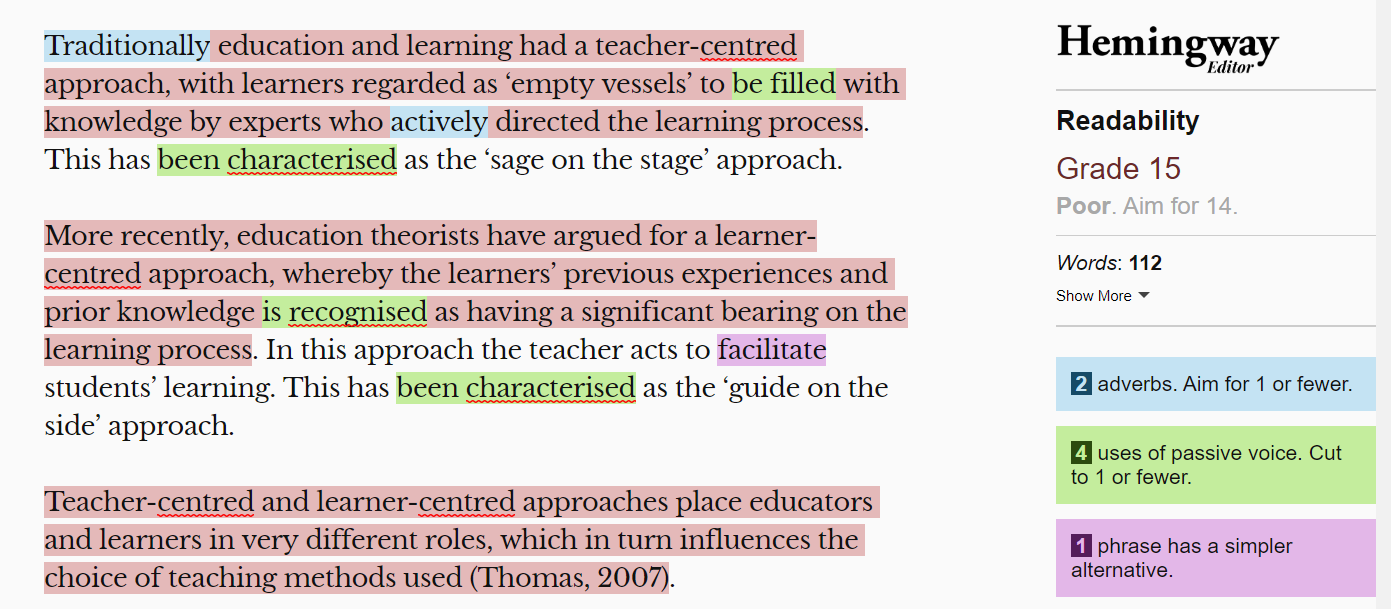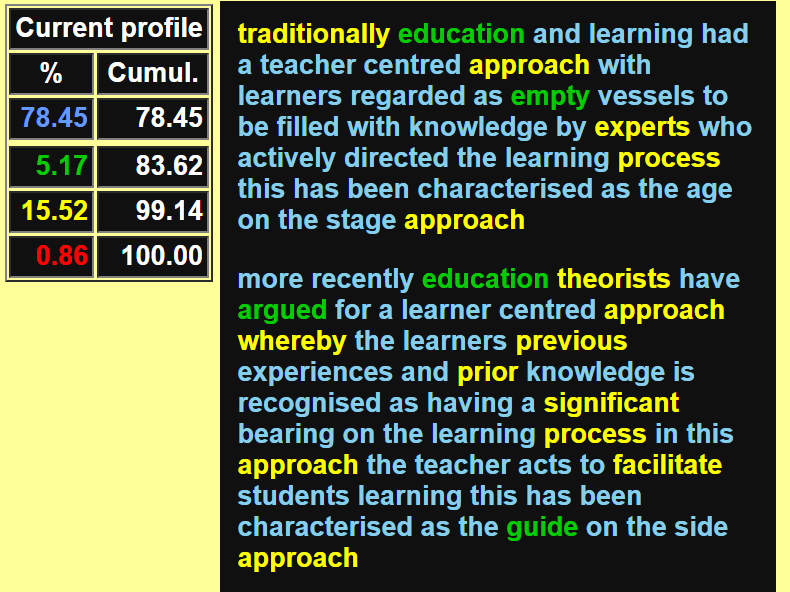If people are going to learn from your course, they have to be able to understand what you're telling them.
Academia, especially, has a bad habit of producing articles that are unnecessarily wordy, complex and written in the passive voice. These articles are harder to read. The message is lost or misconstrued and learners are not engaged. We don't want that for your courses.
In this blog, we'll introduce you to four key sites/tools to help with writing great, clear course content. We'll start with the simplest and work our way up to tools with more detailed analysis.
The plain English site
The plain English site is where to start if you're new to the concept of plain English and just want some guidelines. Plain English is "...a message, written with the reader in mind and with the right tone of voice, that is clear and concise". For the "too long , didn't read" here's the gist of it:
- Prefer short, everyday English words.
- Keeps sentences to an average of 15 words.
- Speak to your reader, say “you” and “we.”
- Write active sentences that make it clear who does what.
- Write strong statements, don't hedge.
This example from Cathy Moore's How to recognize elearning bloat shows what a difference plain English can make.
Clear, concise plain English
"Don’t bring your cat to work, because some of your colleagues could be allergic."
Convoluted and overly descriptive
"All staff, both exempt and non-exempt, should endeavor to observe a complete ban on feline companion animals in the workplace at all times, due to the fact that much of the human population experiences an allergic histamine reaction to cat glycoprotein. Your observation of this ban is appreciated."
This example may seem tongue in cheek, but you'd be surprised just how easy it is for bloat like this to creep in. Use plain English. Attack bloat.
The Hemingway app
The Hemingway app is perfect for a quick sense check with simple stats. This web app highlights sentences you should break up or re-write and suggests alternative words.
Personally, I quite enjoy editing within the app as it highlights things and changes the stats e.g. grade level as I'm making edits. It sort of gamifies it for me, making it a challenge to get to grade 6 readability.
Of course you do need to keep in mind it's a robot, not a human. The grade level changes reasonably quickly if you have a lot of multisyllabic words you have to use. So, you need to layer your own human sense on top. For instance, in the example below, we have made significant improvements to readability (grade 15 to 9). But we would struggle to get below grade 9 because we have to use "teacher-centred" and "learner-centred".
Before
After
The Vocab profiler
The Vocab profiler isn't the best-looking of the tools. But it's what you need if many of your learners would have English as an additional language or low literacy. This app shows what proportion of your text is within the first 1000 most common English words.
Blue words are in the first 1000 words, green are in the 1001-2000 most common words. Yellow are less common words and red words are those they don't have on their list (often proper nouns). In this sample text, 78.45% are in the first 1000 words, 83.62% are in the first 2000 words. Ideally for most contexts, you want to be aiming for around 80% in the first 1000 words.
Using this tool shows me quickly which words I should either replace (see the A-Z of alternative words) or define (i.e. add to my glossary). If you replace wherever you can, you'll find your readability improves.
Readable
Readable is where to go if you're ready to get in-depth with your text analysis. Readable has a pro version, but the free tools still cover a good range for what we'd want for learning content.
The main Readable text analyser is similar to the Hemingway app in that it shows too long sentences and words you should replace. But what I like in Readable are the stats.
Here you can see that when you hover over, you get a measure of "good" so you can see what you should aim for.
They also have sentiment analysis which helps check your tone.

Along with the main text analyser, there's also a Readable text lab with a bunch of different tools. For learning content in particular, common issues would be lazy words and hedge words so definitely give those tools a go.
Summary
Writing is an art rather than a science. But... we can use algorithms to do the heavy lifting - To point out those long sentences and archaic or multi syllabic words. You'll be surprised what a difference these tools can make to your writing. You don't need to use them all. Just give one or two a go to make your content more engaging and easier to read and understand.
Find out more
If you’re interested in iQualify and how it could transform your business check out www.iQualify.com
Or take a look at our knowledge base for more tips on creating great content in iQualify.








